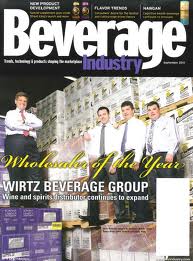Over the years I have worked at a variety of Liquor distributorships along with my families own liquor store. What I have consistently found to be one of the major focuses in each company was the stress on how the supply chain functioned. Take for example my current employer Wirtz Beverage Co. where they are constantly looking for low cost strategies that has the optimal amount of efficiency by using supply chain managers along with meetings every Friday to review efficiency. Currently I am working with various parts of management so that we may be able to provide stores we supply to with a new website providing purchase history, and the ability to buy direct form the site itself. We hope this will be able to take pressure of sale representatives who visit stores, thus saving time and mistakes that happen from time to time in hand written order taking.
Previous to working at Wirtz I had the privilege of working with Anheuser-Bush during there transition stages of there new supply chain project . Working on integrating a logistics program the company was able to get a more sound end to end inventory management along with the proper resource equipment needed for the large orders being placed each and every day . With the new program the company was able to integrate it with material handling automation equipment and wireless data capture which gave real time update from distribution facilities. Even within my parents store I have noticed that they are always searching for new ways to improve inventory count/ supply. Just like Anheuser-Bush they decided to add in a digital logistic program which allows them to track inventory movement. What this ends up being is actually the last step of supply chain, where the data found not only improves the stores understanding of material consumed but will also help the distributors understand what is a necessity to supply and was is not.
In the end what I have learned is that supply management is the backbone to a successful liquor distributor, cutting cost and efficiently providing products. But the real question is, how will technology make supply chain management reach new heights?















